Prøve GULL - Gratis
Train Your Riders Better
HQ magazine
|April 2017
People differ from one another, and that’s a good thing: it makes the world more diverse and colourful. It also explains why you instantly ‘click’ with a certain person, while others are harder to communicate with. As a trainer, you probably recognise that some clients immediately understand your coaching, while others need more information and may repeatedly ask you to show them what you mean, or tune you out completely. This can be very frustrating!
-

Understanding your personal ‘behavioural style’ as well as your clients’ helps you to train with more energy and enthusiasm, and improves the effectiveness of your instructions. As a result, your clients gain more from their lessons and they’re more satisfied with your instructions.
Theoretical background
In work psychology, the behavioural styles theory is widely spread and used around the globe. The theory, based on Carl Jung’s legacy, assumes that we all have a mix of four behavioural styles within us, but there’s always one style that’s most developed. Our natural behaviour can be more introverted or extroverted, and based more on thinking (task) or feeling (people).
What’s your most developed style?
Dominant director You are a straightforward and extroverted person, willing to win, result oriented and competitive. You’re looking for progress and can be impatient when results don’t appear as quickly as you want them to. Your main focus is on task and goals, and you like to challenge yourself and your horse.
Interactive socialiser You are an optimistic, charming and extroverted person. It’s natural and easy for you to make contact. Positive relations with other people and your horse are important. You like public recognition. You’re easily distracted. You like variation, so depending on how it feels, you decide what your approach will be today.
Steady relator You are a friendly, introverted person. You are patient and understanding, and you are a good teacher who is willing to help. You like structure and routine, and doing things at your own pace. When it comes to training, your focus is mainly on improving the things you are familiar with. You have a gentle, step-by-step approach in your riding and teaching, and you are even-tempered.
Denne historien er fra April 2017-utgaven av HQ magazine.
Abonner på Magzter GOLD for å få tilgang til tusenvis av kuraterte premiumhistorier og over 9000 magasiner og aviser.
Allerede abonnent? Logg på
FLERE HISTORIER FRA HQ magazine
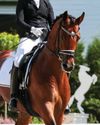
HQ magazine
The Science Behind Tapering
The science behind tapering
5 mins
Issue 155

HQ magazine
Horse Treats
The ultimate guide
5 mins
Issue 155

HQ magazine
Horsey Hair Care
Tips and tricks for a healthy mane and tail
5 mins
Issue 155

HQ magazine
Horsey Hydration- The Importance Of Water In Winter
The importance of water in winter
4 mins
Issue 155

HQ magazine
A Horseback Safari
Abelana Game Reserve
6 mins
Issue 155

HQ magazine
The Psychology Of Riding Performance
Intrinsic motivation, part 7
7 mins
Issue 155
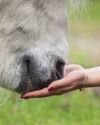
HQ magazine
10 Best Life Lessons From Horses
Life lessons from our horses
4 mins
Issue 155
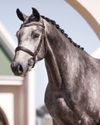
HQ magazine
Breaking New Ground
The evolution of the Callaho Online Auction
5 mins
Issue 155
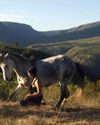
HQ magazine
Horse Psychology 101
Part 3: The horse's cognitive abilities
9 mins
Issue 155
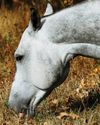
HQ magazine
Colic Part 1
An owner’s worst nightmare
7 mins
Issue 155
Translate
Change font size
